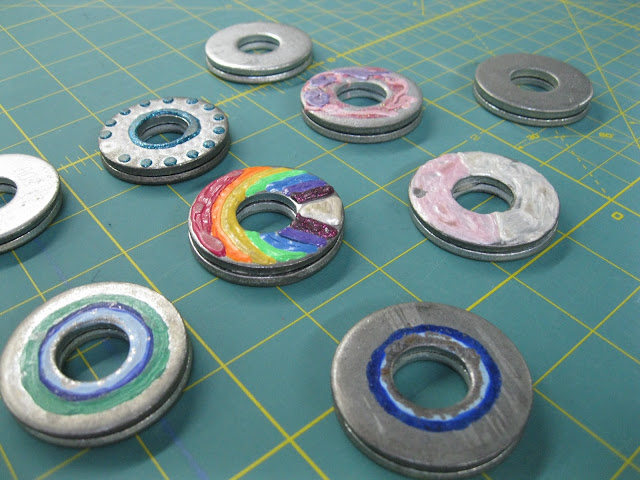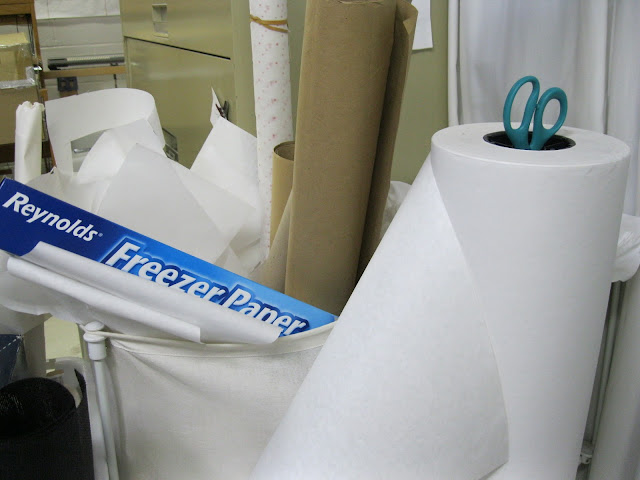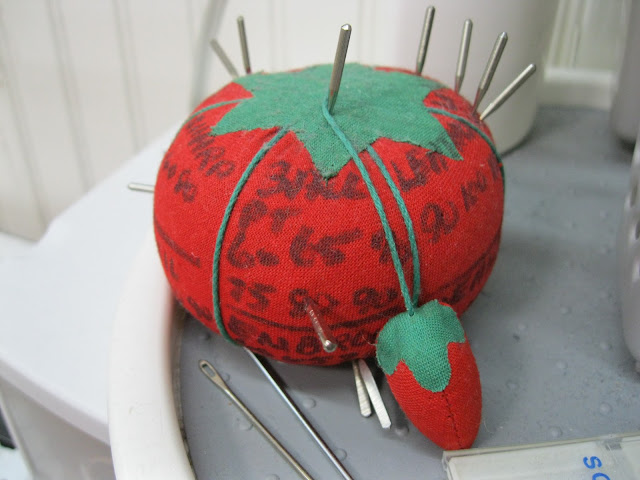1. Sort and store your fabrics, threads, and notions by color.
3. Extend the life of your pattern tissues by keeping them in 9 x 12 manila envelopes. Cut the pattern envelope and glue it to the manila envelope; the tissue doesn't have to be folded so tightly and the patterns go in and out easier.
5. Don't forget to press your pattern pieces before laying them out on your fabric - set your iron on synthetic and no steam.
6. Keep pin cushions at both your sewing machine and your work table - saves jumping up and down for pins.
7. Use a tomato pin cushion to store slightly used machine needles - use a marker to divide it into sections for each type (Universal, 60, 70, etc.)
8. Don't sew over pins - it can nick both the pin and the needle and cause burrs that then can cause pulls and runs in your fabric
10. You can make your own seam stick by going to the hardware store and getting an 18" piece of 1/2" half round moulding
9. A good substitute for a velvet board is a thick terry cloth towel.
We hope these have been helpful! We will do another round up in a few months, but in the meantime, you'll see our updates in real time every Tuesday on Facebook, LinkedIn, and Google+.











No comments:
Post a Comment